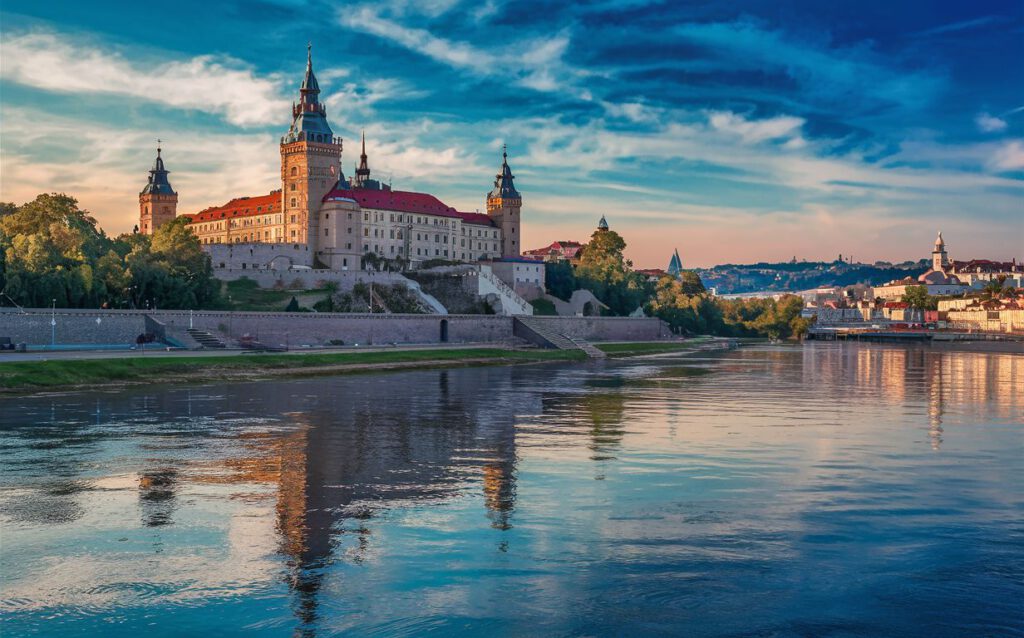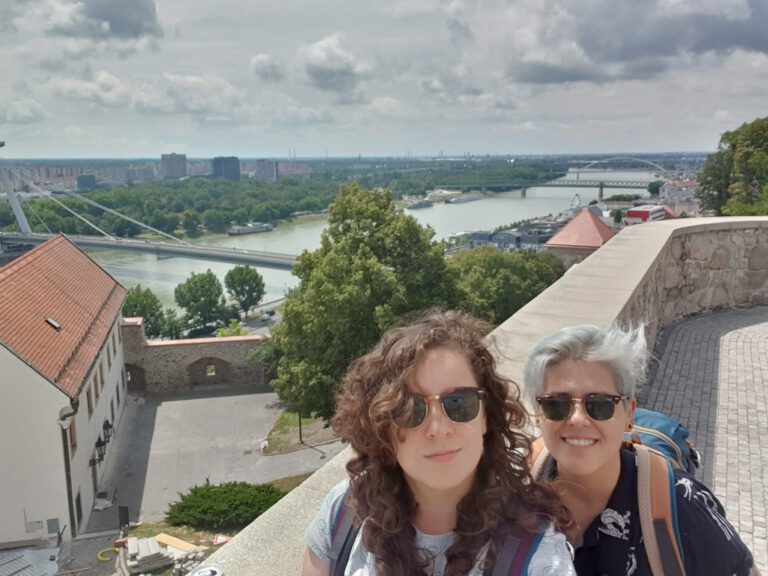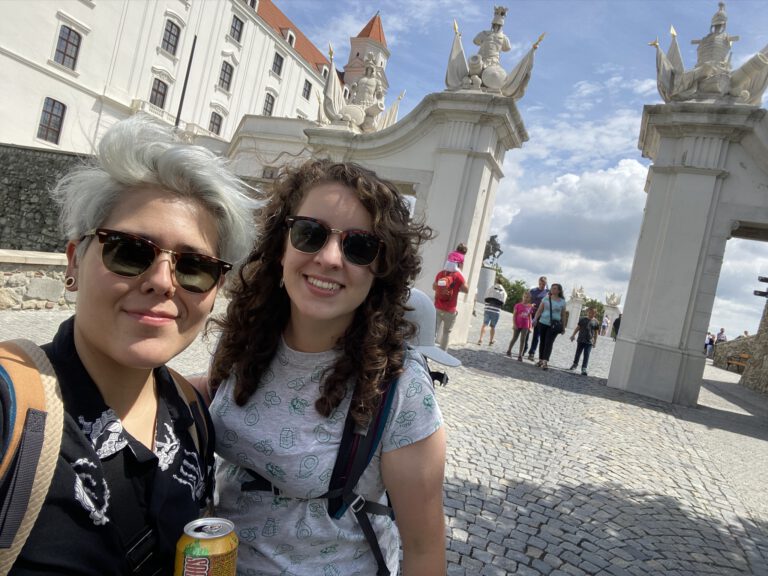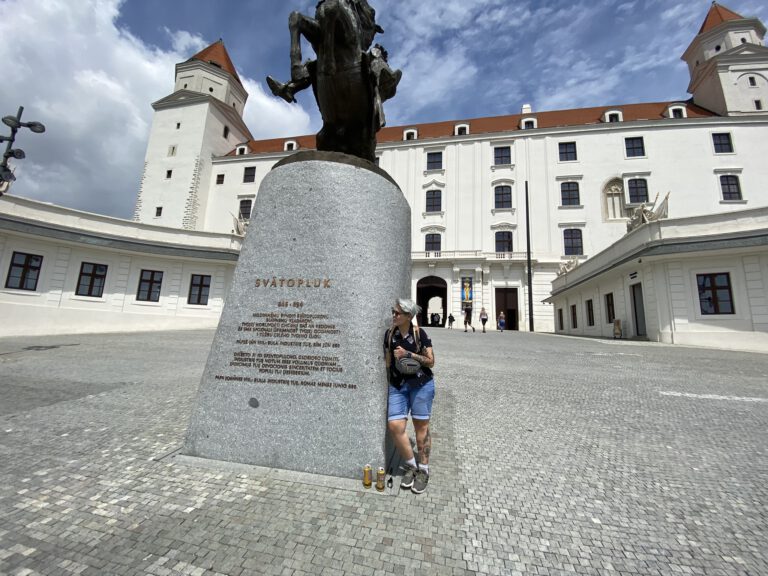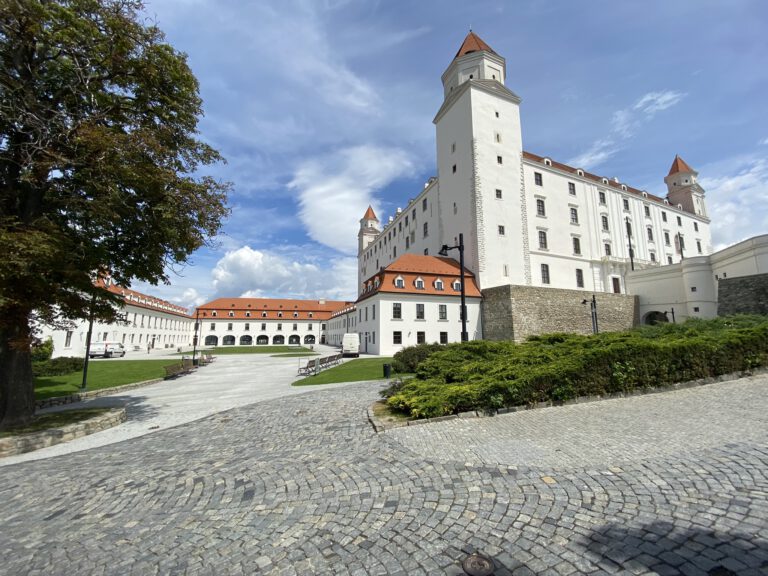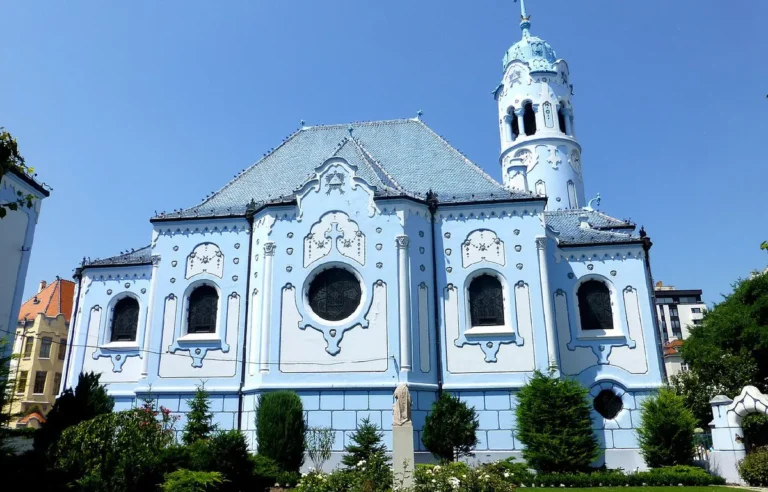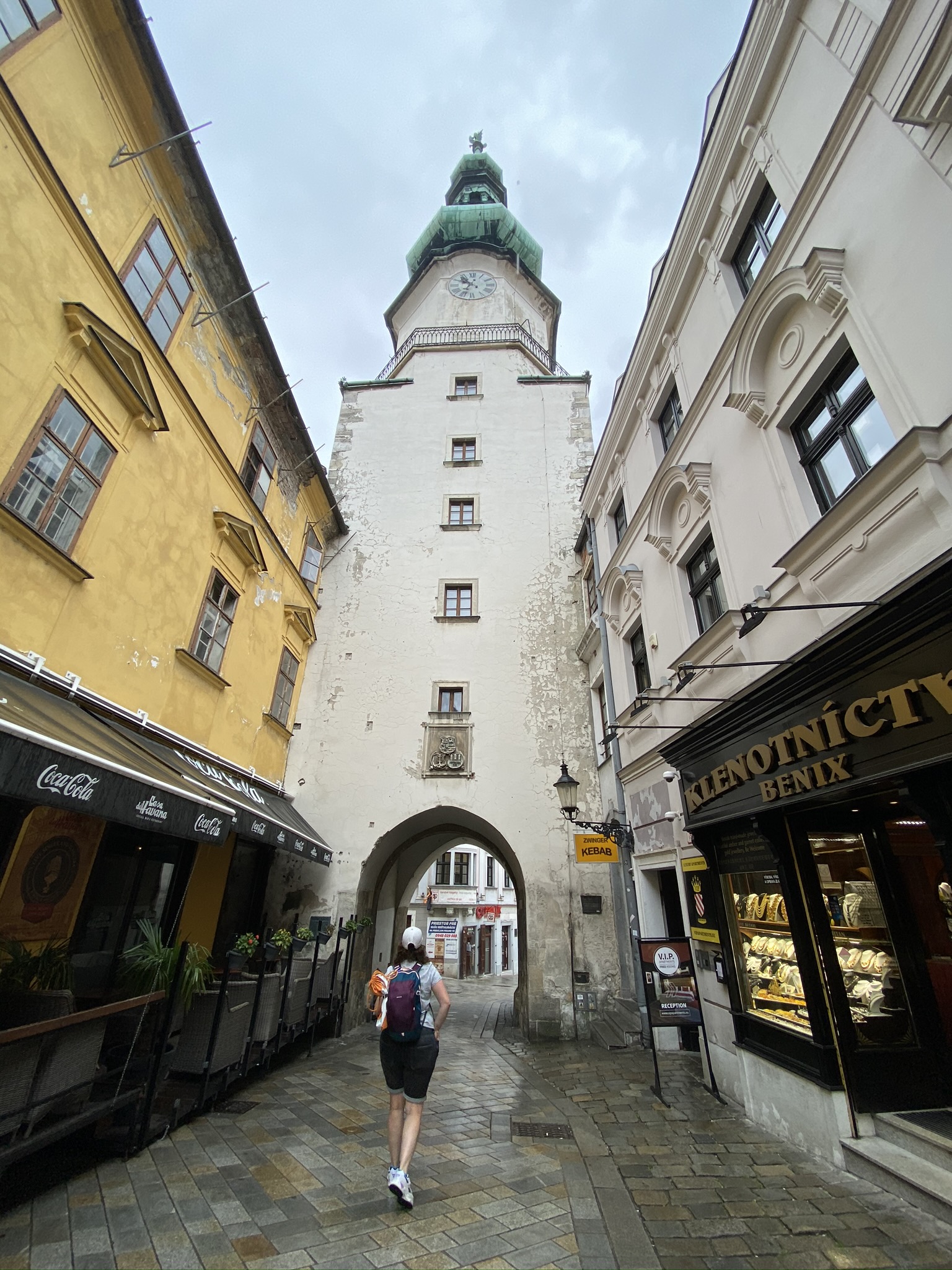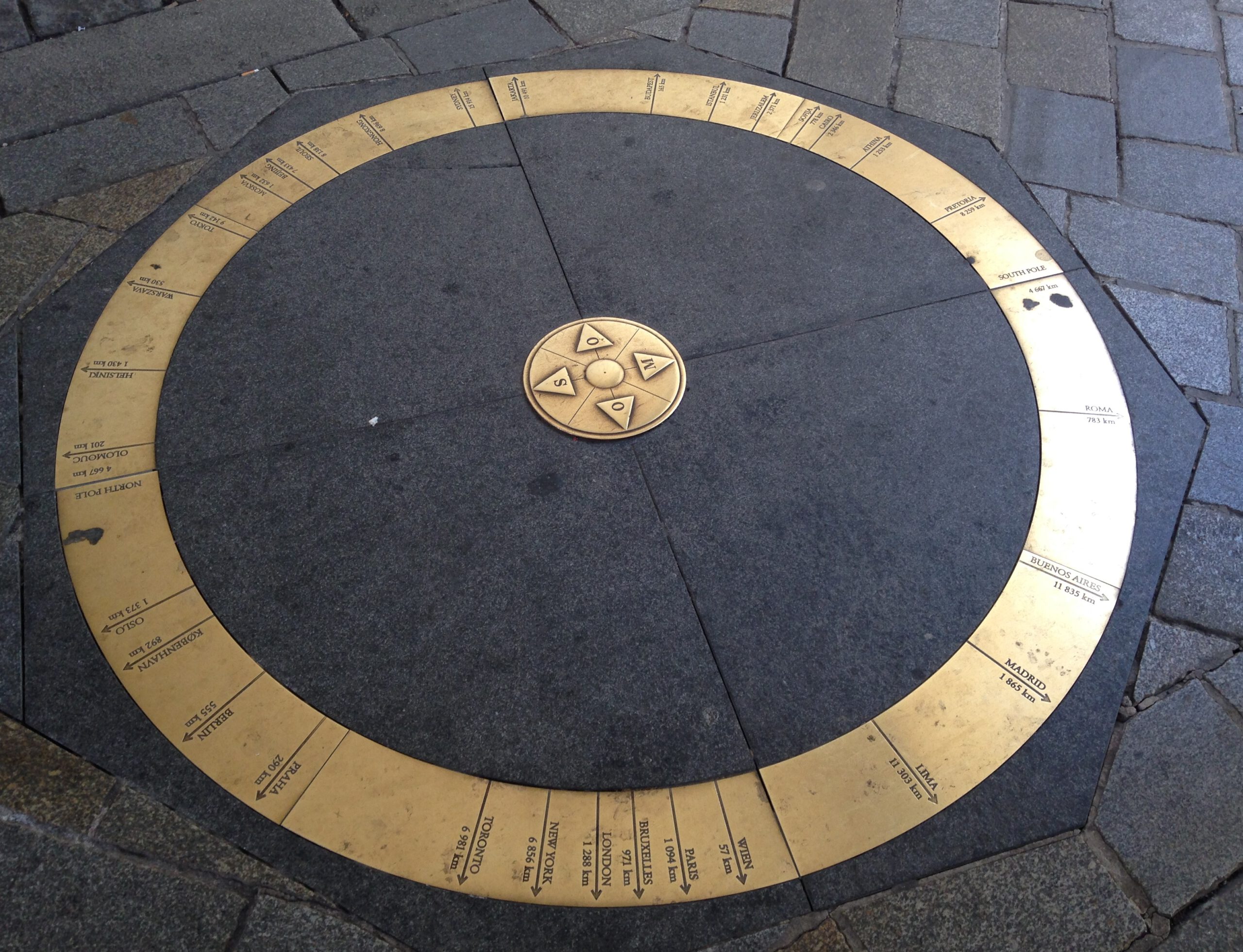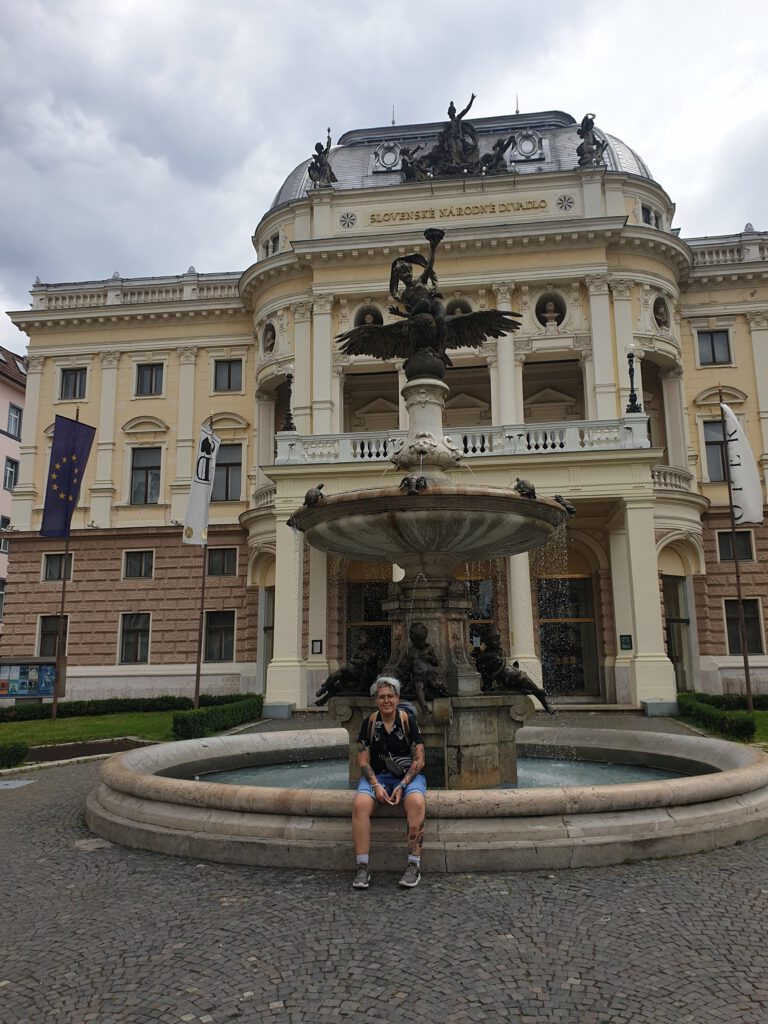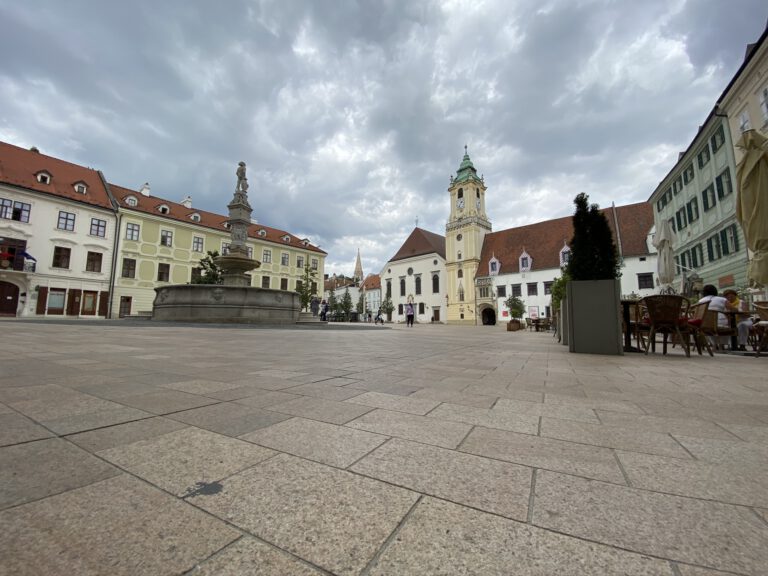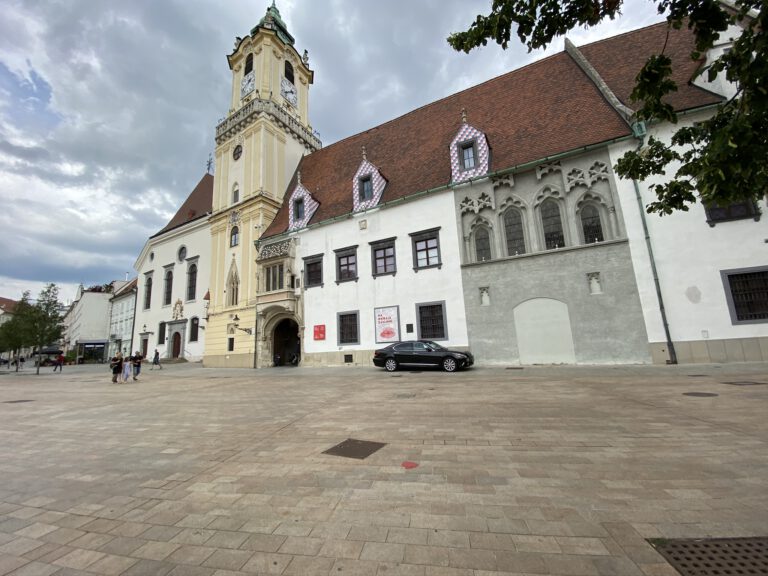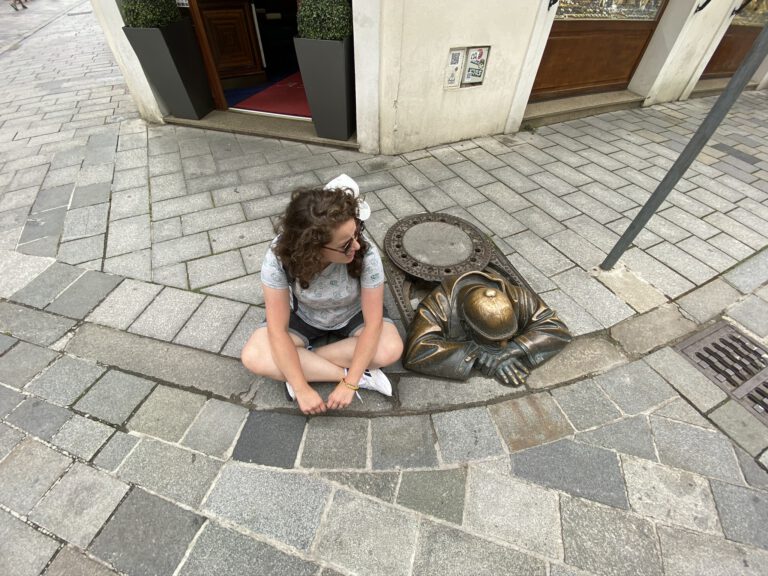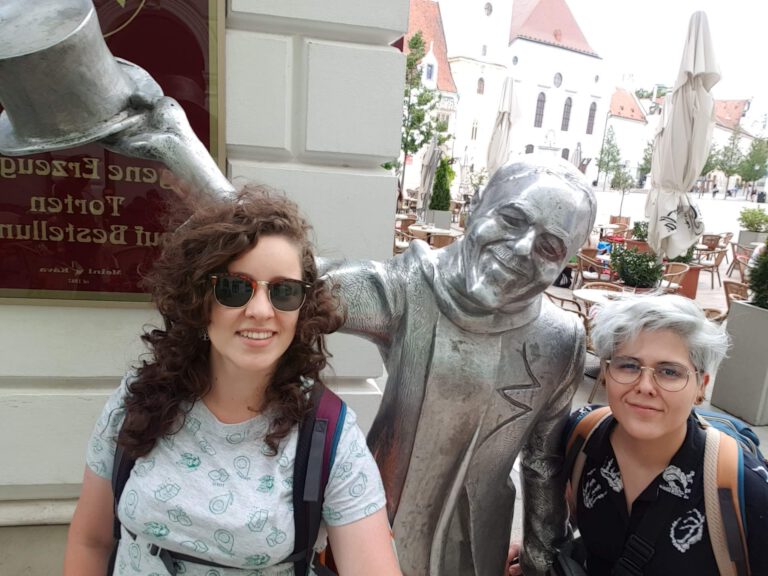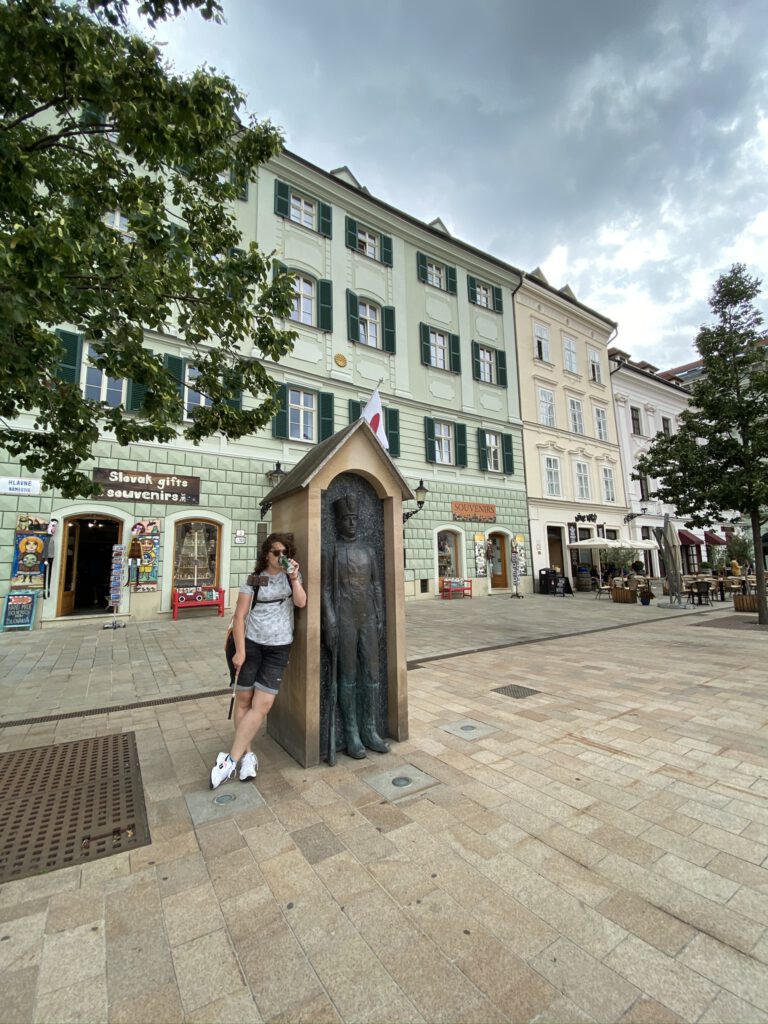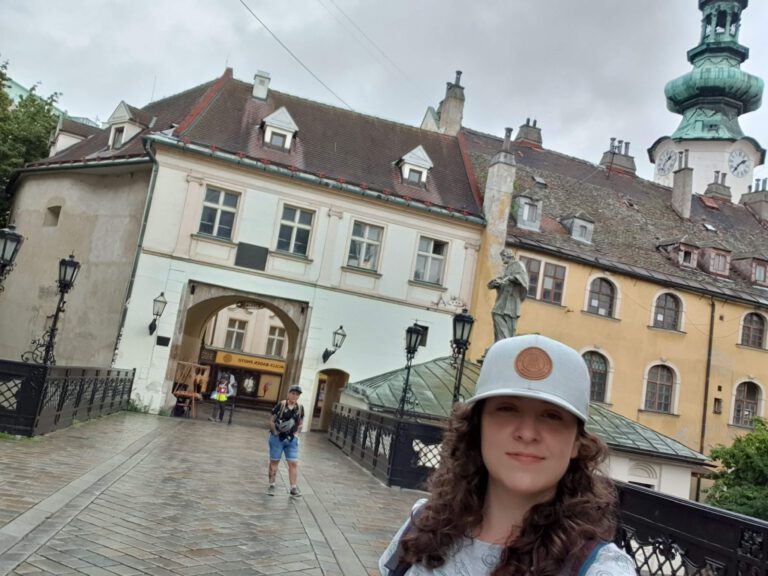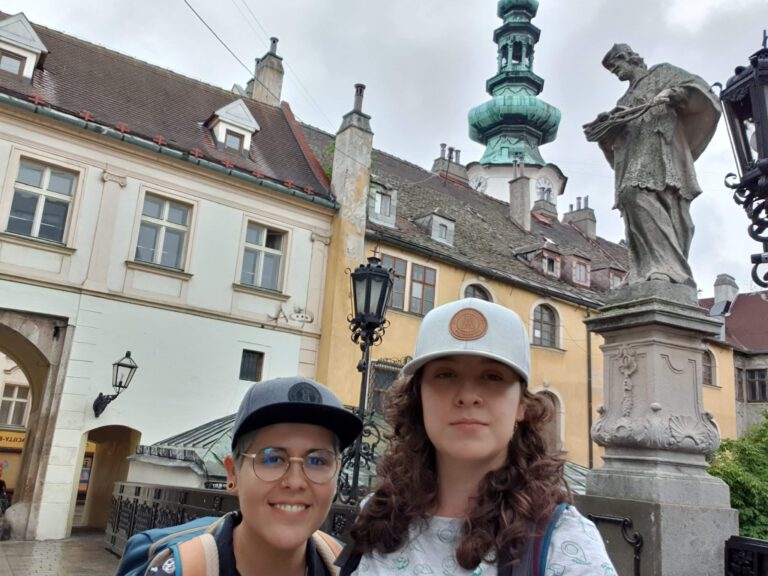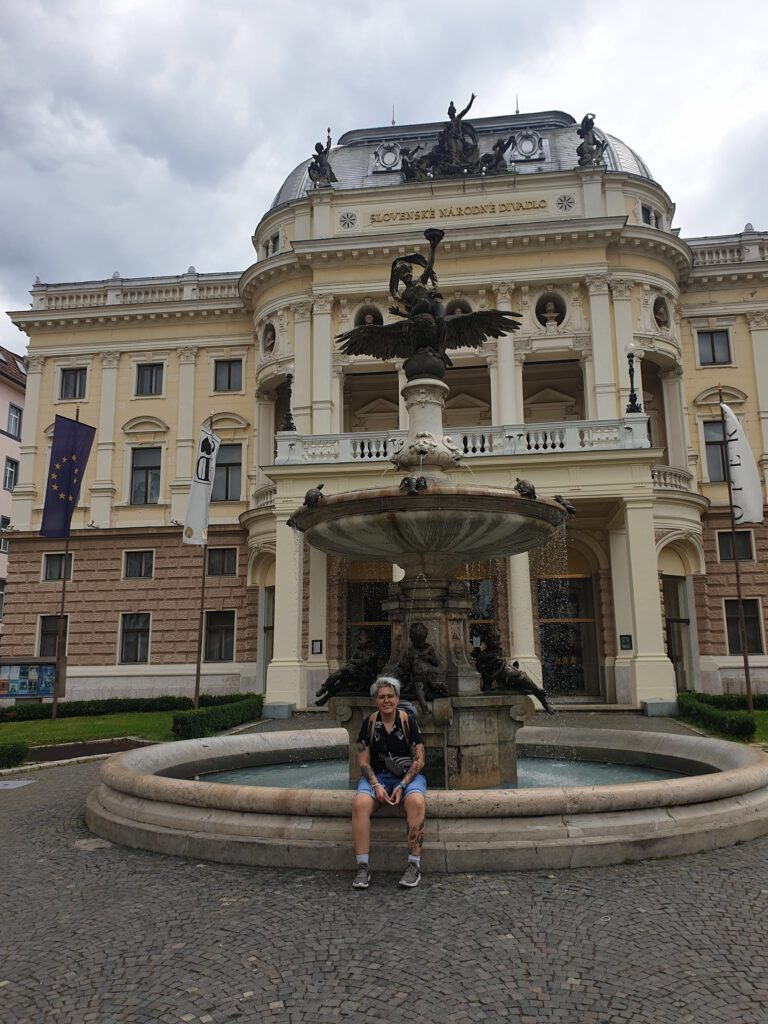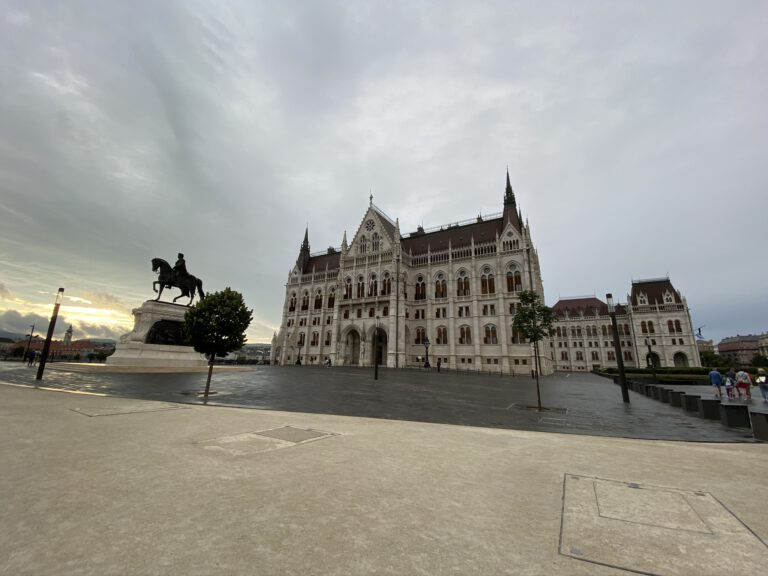Bratislava pleasantly surprised us during our trip through Europe. It wasn’t in our plans, but that’s how the best adventures happen, isn’t it? It all started while we were exploring Vienna and we got curious about what lay beyond the border. It was then that we saw that RegioJet bus, with its one euro promotion that would take us directly from Vienna to Bratislava. Without hesitation, we got on board, unaware that we were in for an encounter with a city full of history and charm, nestled on the banks of the majestic Danube.
If you are going to Bratislava, you have to visit:
Majestically located on a hill and overlooking the river, has witnessed countless events throughout the centuries. I cannot start this list of things to do in Bratislava without mentioning this castle. It is impossible to miss!
Although the original structure dates back to the 10th century, what you see today is the result of a painstaking reconstruction task completed in 1968. The current design, inspired by an 18th-century building, stands out for its four towers with red domes, now a symbol of Bratislava.
Visiting this castle is one of the most essential things to do in Bratislava. Why? Well, it has a lot of history, and this is where the constitution of Slovakia as an independent country was signed in 1992! It also houses the Bratislava History Museum and the official residence of the President of the Republic. And the views from here are simply spectacular, with the Danube River winding its way through the city. In summer, you can even catch a concert.
Additional Information
- The castle is open from 10:00 AM to 6:00 PM daily.
- Admission is €10 for adults and €5 for children.
- You can take a guided tour of the castle for an additional €5.
- The Blue Church is open from 9:00 AM to 6:00 PM daily, admission is free.
Tips
- The best time to visit Bratislava Castle is in the morning or early evening to avoid the crowds.
- Be sure to wear comfortable shoes, as you will be doing a lot of walking.
- There is a restaurant and café on site, so you can take a break and enjoy the views.
- If you are interested in learning more about the history of Bratislava, I recommend visiting the Bratislava City Museum.
St. Michael’s Gate, something of the simplest but for me the most fascinating in this city, this gate is an imposing medieval relic that once marked the entrance to the fortified city, it is now an iconic symbol of Bratislava.
St. Michael’s Tower is 51 meters high, the street that passes under St. Michael’s Gate marks kilometer 0 of Bratislava, and there is a disk with the directions and distances of the capitals of several countries. The gate is the only survivor of the 4 gates that medieval Bratislava had.
As we passed by this place, a local told us that we had to be very careful, because there is a legend that says that whoever passes through this gate speaking or making any kind of noise, will die in a year and a day. Is it true or not? I don’t know, but we didn’t want to risk it, so like good tourists, we passed by in silence, and I’m still here.
Additional Information
- St. Michael’s Gate is located in the Old Town of Bratislava, Slovakia.
- It was built in the 13th century and is the only surviving gate of the four that once guarded the city.
- The gate is named after St. Michael, the patron saint of Bratislava.
- The gate is 51 meters high and has a green copper roof.
- There is a small museum inside the gate that tells the story of Bratislava’s history.
Tips
- If you are visiting St. Michael’s Gate, be sure to take some time to admire the architecture. The gate is a beautiful example of medieval craftsmanship.
- You can also climb the stairs to the top of the gate for stunning views of the city.
- There is a small museum inside the gate that tells the story of Bratislava’s history.
Bratislava’s Main Square is the bustling heart of the city, where local life blends seamlessly with tourism. Surrounded by elegant historic buildings, cafes, and restaurants, it’s the perfect place to immerse yourself in Bratislava’s urban atmosphere and enjoy its culture and cuisine.
It was then that, walking through the streets of Bratislava, I discovered a hidden treasure among the historic architecture: the Bratislava Statues. These curious monuments, from Napoleon’s soldier to the man peeking out of a manhole, are scattered throughout the city, like silent witnesses to its tumultuous history. I learned that these statues, more than just pieces of art, are an expression of Slovak identity and ingenuity, emerging as a way to rebel against communist oppression and give voice to everyday narratives. Each one has its own story intertwined with the city’s rich history, from local legends to historical events, and I realized that they are much more than just sculptures: they are windows into the soul of Bratislava, reminding me that behind every corner there is a story waiting to be discovered.
Additional Information
- The Main Square is located in the Old Town of Bratislava, Slovakia.
- It is surrounded by many historical buildings, including the Old Town Hall, the Michael’s Gate, and the Primate’s Palace.
Tips
- If you are visiting Bratislava, be sure to check out the Main Square. It is a great place to people-watch, enjoy a meal, or do some shopping.
- The square is especially lively during the summer months, when there are often concerts and festivals held there.
If you are going to Bratislava, you have to eat:
Upon arriving in Bratislava, we found ourselves in a culinary universe as fascinating as the city itself. After a day of exploring its cobblestone streets and charming squares, we ventured out to try some of the traditional Slovak dishes that had been recommended to us.
To start our gastronomic experience, we opted to try the famous Cesnaková polievka krémová, a delicious creamy garlic soup that warmed our souls and stomachs. We found this soup for an approximate price of 4 to 6 euros.
After this dish and looking at the menu we decided to order Naše domáce zemiakové guľky, some delicious mashed potato balls filled with meat or cheese, typical of the region, for an approximate price of 8 to 10 euros.
Another dish that caught our attention was the Cigáro Knižka na doštičke, a kind of bacon-wrapped meat roll filled with mushrooms and cheese, accompanied by a generous portion of potatoes, and the price was 15 euros.
Our chosen restaurant was the Slovak Pub. Each dish not only delighted us with its authentic flavors, but also immersed us deeper into the rich culinary culture of Slovakia. Without a doubt, discovering the local cuisine was one of the best parts of our unexpected adventure in this charming city on the banks of the Danube.
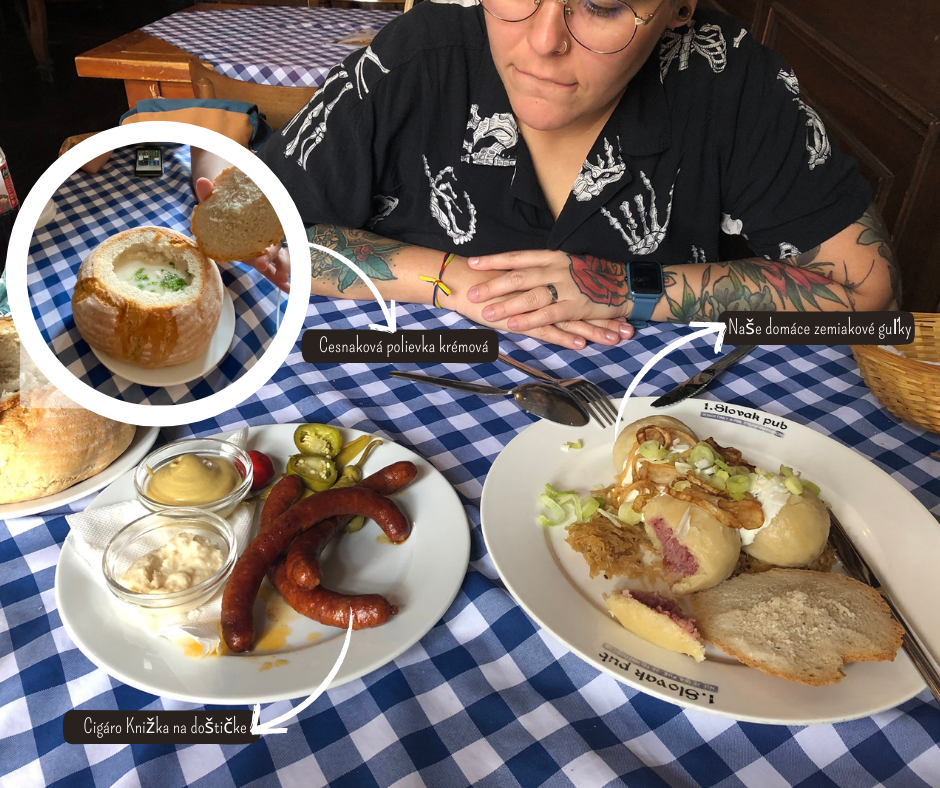
Bratislava has left us with a sweet taste and a smile on our face. A city that invites us to return and continue exploring its hidden treasures. A destination that, without a doubt, we will keep in a special place in our traveling heart.
